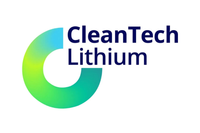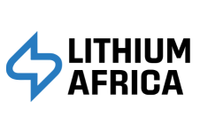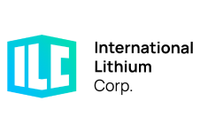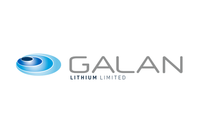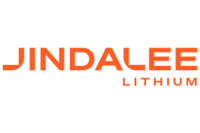
There’s no shortage of excitement in the lithium market, but James Callaway of Orocobre reminded investors to remain cautious when choosing lithium stocks.
It’s no secret that there’s a lot of excitement around lithium these days. However, a number of analysts and market watchers have cautioned investors to be careful when wading into the space.
For example, at this year’s Lithium Supply and Markets Conference Orocobre (TSX:ORL,ASX:ORE) Chairman James Callaway shared his worries about a potentially significant misallocation of resources in the lithium sector. Plenty of companies are jumping into lithium at the moment, but few have teams who understand the complicated chemical processes needed to extract lithium and produce lithium products, or who know how difficult setting up a plant can be.
The Investing News Network (INN) reached out to Callaway to get more of his thoughts on the matter.
Callaway stressed that he isn’t trying to be discouraging. In fact, he believes it’s important that smart management teams get on with developing smart projects, and he’s optimistic that this will happen given the current price environment.
His concern, however, is the sheer volume of new lithium companies and lithium projects being announced, with financial promoters adding to the hype.
Raising millions on a single word
“My main concern is that I’m seeing a whole lot of people really don’t know anything about lithium, who have never studied lithium jumping in and grabbing anything that says lithium sticking it on their name and being re-rated,” he explained.
Certainly, with lithium prices on the rise and other metals only now starting to come back from a prolonged price rout, switching to lithium has been a bit of a trend. Also, on top of existing junior exploration and mining companies switching focus, there are also plenty of new companies joining the fray.
This has happened once before in the lithium industry, and it didn’t end well for investors. Without naming names, Callaway said that he sees some of the same players coming back to the lithium sector.
“I would say that there is a substantial number of people that are showing up again—people that were in the first line of promoters—who are now reemerging with their next great project, and who don’t really have much of an intent to do anything about it,” he said. “They’re just trying to find a path to flip their deal.”
Quality lithium supply needed
Understandably, that’s troubling for both lithium companies and investors that are in it for the long haul. Hype or not, battery demand is rising and additional lithium supply is needed.
“It is not in the interest of this industry to have poorly conceived ideas with people without any kind of experience raising money on the back of the word lithium,” Callaway said,” and I think it’s important for the investing community to be very, very discriminating about what projects they put their money into.”
Put simply, it takes much more to bring a lithium project into production than one might think. Despite all of the excitement, the lithium sector is still quite small relative to the markets for other commodities such as copper or iron, so there’s a much smaller pool of lithium-specific talent to pull from in order to build teams that can develop complex chemical processing plants.
“There’s just not a lot of experience out there in the world on how to do this stuff,” Callaway said. “So part of it is assembling a team, going through it, experiencing it, finding out the things you didn’t know, working through the kinks, and then settling down an operating team than can run on a highly efficient basis. I think those things take a lot more time and effort and experience than people know.”
Certainly, Callaway’s Orocobre has seen plenty of challenges and delays ramping up production at its Olaroz project in Argentina forward. But as he pointed out, in recent years, the company has done a lot better than others, such as RB Energy, which was forced to close its doors shortly after going into production in 2014. “No one has delivered except for us,” Callaway said.
Orocobre is aiming to bring Olaroz to full nameplate capacity by September, and is aiming to double production in the next two years.
The danger of high lithium prices
Another point Callaway drew attention to was the importance of low production costs. It’s a point that has been brought up by Chris Berry of House Mountain Partners and the Disruptive Discoveries Journal time and time again—new lithium players will have to have low production costs to compete with existing players, and to stay profitable in the long term.
Even with sky-high lithium prices to consider, Callaway counselled caution. “If your project needs to have $12,000 per ton battery grade lithium carbonate to be viable, you really ought to reconsider,” he stated.
Callaway is optimistic about lithium prices, but stated that there were plenty of factors to consider, such as how fast both brine and hard rock production can expand, what happens with lithium converters, and what happens in the electric vehicle market. He believes that lithium prices will normalize in the medium term, and when they do, higher-cost projects will have much more vulnerable revenue streams.
For example, he pointed to low-grade hard rock lithium projects that do very well with high prices, but which risk seeing their margins crushed with any kind of price normalization. A lower cost project that would be better equipped to weather the volatility that often plagues commodities prices.
“I really don’t hear enough conversation in my opinion driving a differentiation between those types of revenue and the reason is, people have gotten drunk on these high prices,” Callaway said. “If you assume that prices are $12,000 to $15,000 a ton, everything sort of works but it’s a game that assumes high pricing for a long period of time.”
How to invest in quality lithium stocks
When looking at lithium stocks, Callaway suggested that investors focus on two main points; the quality of the company’s lithium asset, and the experience and commitment of the management team developing it.
“The quality of the asset is really important,” Callaway said. “If you do the scatter plot of all the projects that are out there in the hard rock space, I [estimate] you would see that the vast majority of them have in-situ lithium [grades] in the sort of 1 to 1.2 percent, maybe 1.25 percent range. But Greenbushes is way over two percent, and that makes a huge difference.”
The Greenbushes mine in Australia is the largest lithium mine in the world, jointly owned by China’s Tianqi Group and US based Albemarle (NYSE:ALB). Much of Australia’s hard rock lithium production is exported to China in the form of spodumene concentrate, where it is then further processed into end products such as lithium carbonate and lithium hydroxide.
As an example of a quality deposit in the hard rock space, Callaway pointed to Nemaska Lithium’s (TSXV:NMX) Whabouchi project in Quebec. “If you take a look at the resource of Nemaska, for instance, they’re sitting at way over 1.5 percent. with a thick vein,” he explained. “That’s very anomalously good compared to most of these things that are out there.”
More generally, Callaway shared a few of his thoughts on what makes a good resource for both brine and hard rock:
“In the brines, you want to have high lithium content and low contaminants and you want some variable extent and height in the reservoir,” he stated. “In the rocks, you want to have it very mineable. So you’ve got to be paying attention to things like the costs of mining and mine-life. And in my opinion … stuff that’s closer to 1.4, 1.5 and above [in grade] are going to be anomalously good hard rock resources.”
Finally, Callaway stressed the importance of a management team that is committed to seeing the project through. That’s something that he believes has been essential to getting Orocobre through its challenges, and that will be key to the success of other companies as well.
“That’s how real enduring values are being created, and those are going to be the winner companies,” Callaway said. “I just think there are not very many of them out there.”
Don’t forget to follow us @INN_Resource for real-time news updates!
Securities Disclosure: I, Teresa Matich, hold no direct investment interest in any company mentioned in this article.
Editorial Disclosure: The Investing News Network does not guarantee the accuracy or thoroughness of the information reported in the interviews it conducts. The opinions expressed in these interviews do not reflect the opinions of the Investing News Network.
Nemaska Lithium is a client of the Investing News Network. This article is not paid for content.
